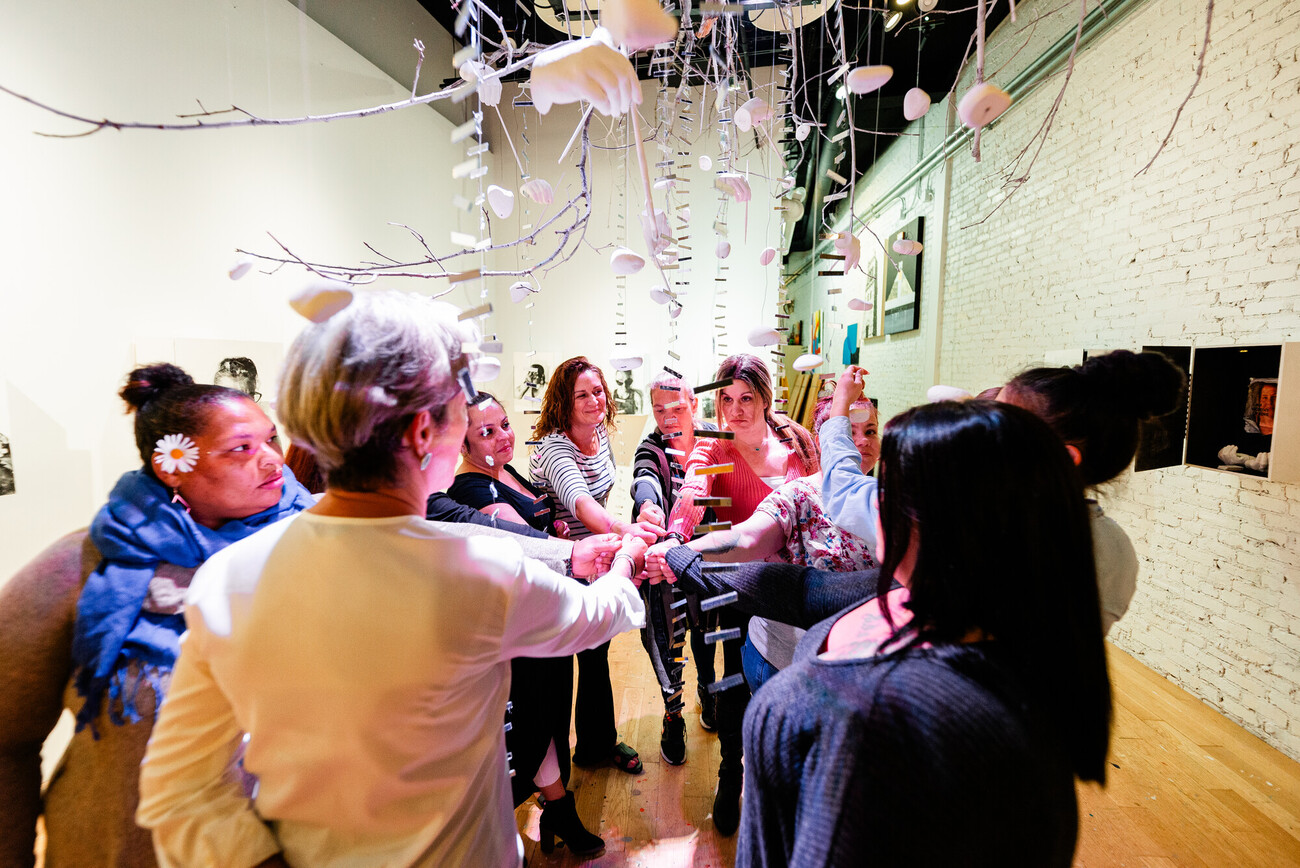LYNN — A new exhibit at Great Art Studio, “Shame Fear Love,” is tackling women’s experiences battling addiction.
The exhibit is the work of 12 women from Bridgewell’s Johnson Street residential treatment program.
“This was a chance for us to get out of the house and be in an intimate setting with women,” Melissa Hinckley, of Gloucester, who is in the Johnson Street program, said. “It was nice to be in a small group and get to open up and share our thoughts and feelings.”
The project has been in development since July, when the women started working with art therapist and GAS founder Mary Flannery.
“I’m pretty passionate about making art with people that unfortunately stay invisible,” Flannery said. “I think that art can really give voice to everyone’s story.”
According to Flannery, people struggling with addiction can benefit from using art as a voice to show those who haven’t faced addiction the challenges and emotions of their experiences.
“I really wanted people to walk in the door and really feel like they were invited into something sacred, kind of scary, and super intimate,” she said. “It was a huge gesture on these women’s part to say ‘You can come inside.’”
Heather Fahey, of Beverly, said that the exhibit shows the core of what people battling addiction go through.
“Fear, shame, and love really go hand in hand with addiction and recovery,” Fahey said.
Hinckley said that there were difficult questions for the women to answer over the course of the project as they dealt with the traumas of their past.
“A lot of us had to answer the question of what we think love is, and none of us could come up with an answer right away,” Hinckley said. “But when we had the question of ‘What is fear for you?’ a lot of us had answers right off the bat.”
Fahey also said the small group sessions with the other women were some of the hardest but most fulfilling parts of the experience, and that they made her “dig deep.”
“Usually I don’t like to do that, I try to avoid that,” Fahey said.
Flannery said along with being a healing experience for the women, the project was also important in showing the strength the women displayed when they entered the Johnson Street program.
“What they’re trying to do takes so much strength and courage,” Flannery said. “It can be really lonely… It’s a struggle.”
The project started with 12 women, but finished with 10 after two women left it, including one woman named Abbie who relapsed and later died of an overdose.
Fahey was one of the women who was closest to Abbie and was happy to see Abbie’s work still included in the exhibit.
“Every single one of us was in the house with her and really got to know her,” Fahey said. “I think her box speaks volumes. She didn’t get to complete it, but it sends a big message.”
Hinckley said the opportunity that working on the project with Flannery presented was an entirely new experience for her. She said it spoke to her, especially when compared to other types of treatment options.
“A lot of us are there for addiction or alcoholism,” Hinckley said. “There’s not a lot of programs where you’re able to do something like this… I wish there were more places that were able to have this.”
Hinckley said that after seeing the finished exhibit, she felt a tremendous sense of pride for what she and the other women were able to make.
“This is really big for us,” she said. “We put our hearts into this.”
According to Flannery, the exhibit, which was also developed with her husband and GAS co-founder Chris Whitlock, will run until the end of the year.
Those interested in viewing the exhibit can contact GAS to learn more at https://greatartstudiolynn.com/contact-us.

